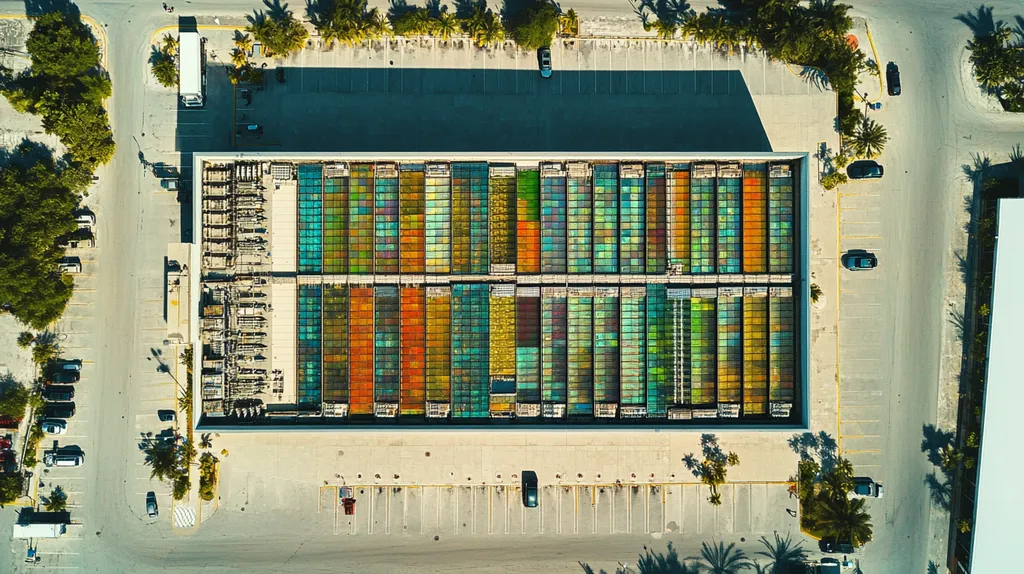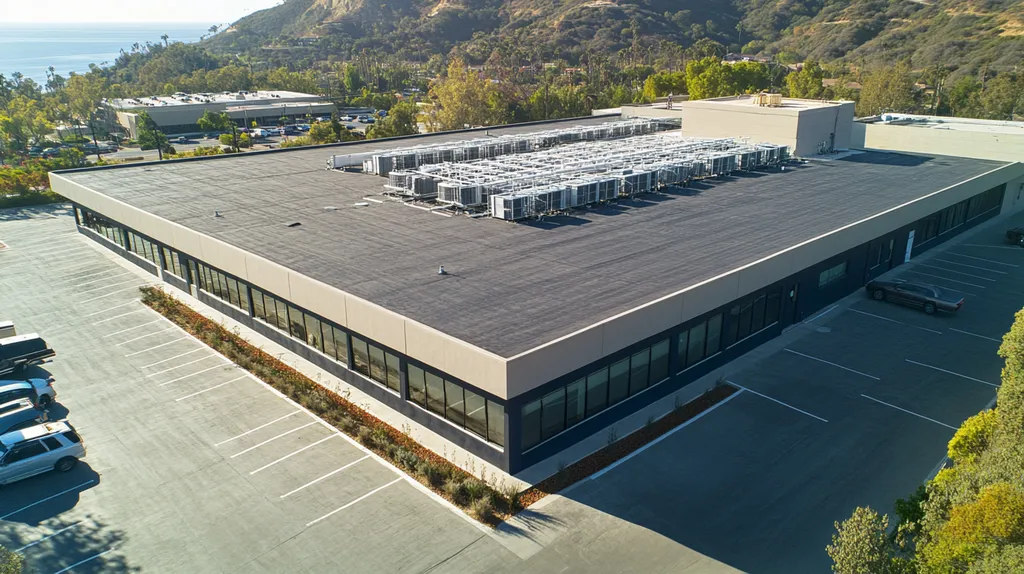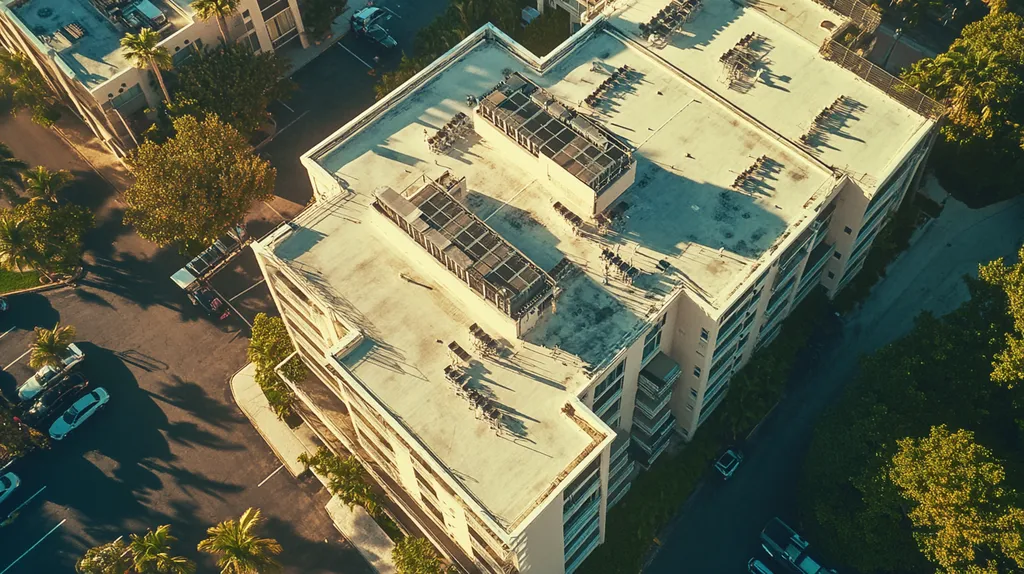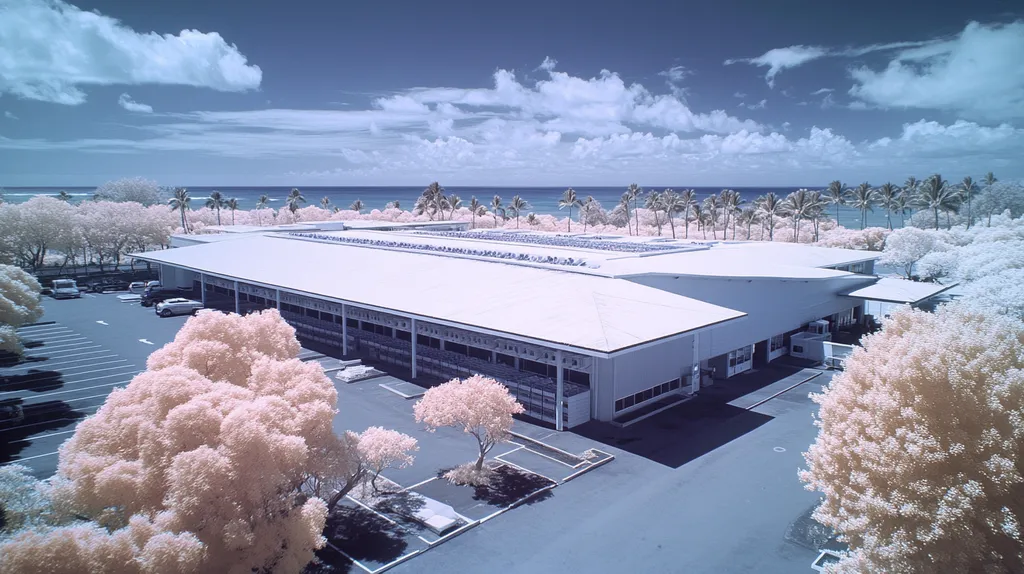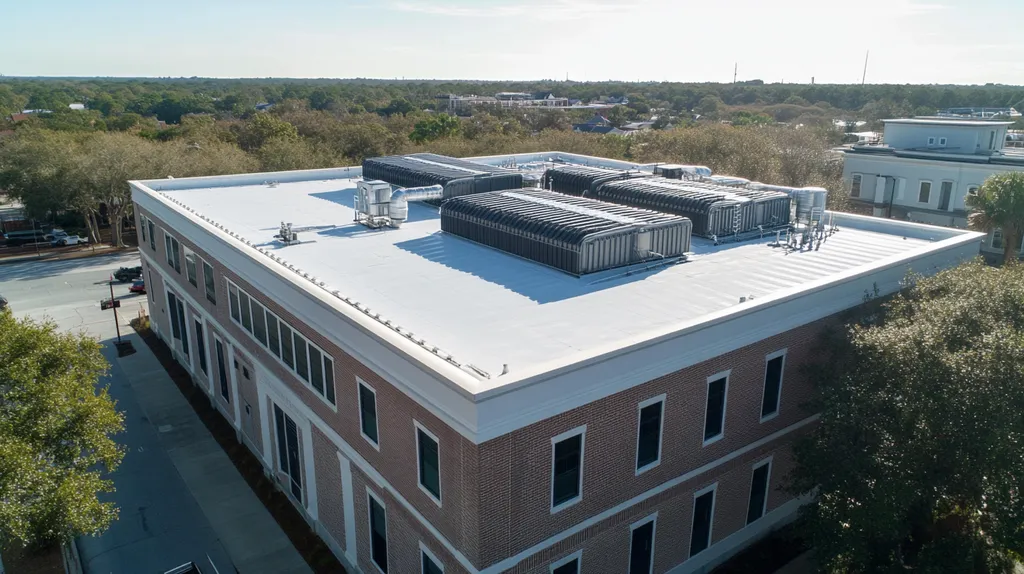Primer selection can make or break a commercial roof coating project, with studies showing that improper primer choice leads to a 40% reduction in coating lifespan and up to $150,000 in premature repairs for the average commercial building.
For property professionals navigating the complex world of roof coatings, choosing the right primer is no longer optional – it’s essential for protecting substantial investments in roofing assets.
This comprehensive guide examines critical factors in primer selection, from performance metrics and financial considerations to compliance requirements and risk management strategies.
By understanding these key elements, facility managers can optimize their coating systems while avoiding costly failures that plague improperly primed commercial roofs.
SECTION 1: PERFORMANCE FACTORS
When it comes to commercial roofing, the right primer can be a game-changer; it can mean the difference between a roof that thrives and one that suffers costly failures. Studies indicate that improper adhesion leads to coating delamination, which can dramatically shorten the lifespan of roofing systems. Making informed primer selections is not just smart—it’s essential for ensuring durability and weather resistance.
Surface Preparation Needs
Surface preparation is absolutely vital for a successful primer application on commercial roofs. A clean and smooth surface serves as the foundation for effective bonding, ensuring that the coating performs at its best. Skipping this step, such as neglecting to remove dirt or debris, can create alarming adhesion problems.
For example, when applying coatings to older membranes, using specialized cleaning agents is often necessary to eliminate stubborn contaminants. Roofs with oil stains or loose granules require extra attention. If these issues are ignored, the primer risks failing to adhere properly, jeopardizing its protective capabilities.
Interestingly, while a textured surface can enhance primer adhesion, compatibility is crucial. Using the wrong preparation method may waste time and resources, driving up labor costs.
Contractors should also never overlook moisture testing before applying primers to confirm that surfaces are dry enough for effective bonding. Proper surface preparation significantly increases both adhesion strength and our roofing systems’ overall longevity.
Key Action Items
Adhesion and Bonding Strength
Adhesion and bonding strength are critical to the effectiveness of any commercial roof coating. Quality primers enhance the connection between the existing roof surface and the new coating, creating a long-lasting seal that can withstand the elements. For example, there are specific primers designed for TPO or EPDM surfaces that cater to their unique adhesion needs.
Testing bonding strength through sheer and peel tests can provide valuable insight into a primer’s effectiveness. A primer that fails to bond properly may result in significant problems down the line, such as cracking or peeling when the roof is subjected to stress.
It’s essential to select a primer that complements the substrate material for optimal performance. Understanding the specific requirements of different roofing types can dramatically reduce risks associated with poor adhesion.
Additionally, attention to proper application techniques—such as monitoring temperature and humidity levels—ensures the best possible adhesion. Investing in high-quality primers can prevent long-term issues and protect property investments.
Key Action Items
Weather Resistance and Durability
Weather resistance plays a vital role in selecting primers for commercial roof coatings. Roofs constantly face a barrage of environmental elements, like UV rays, rainfall, and temperature extremes, which makes a top-notch primer your first line of defense against these forces.
For instance, UV-blocking primers can help stave off deterioration caused by sun exposure, remarkably extending the life of the underlying roofing material. Similarly, water-resistant primers act as shields against moisture intrusion that leads to issues like mold growth or structural damage.
It’s essential to prioritize durability since some primers can degrade over time, resulting in premature coating failures. Property owners should seek out primers that undergo stringent testing for long-lasting performance in various weather conditions.
Integrating weather-resistant primers into roofing maintenance plans enhances performance and can improve energy efficiency. High-quality primers can reflect sunlight and reduce heat absorption, ultimately lowering energy costs.
Key Action Items
SECTION 2: FINANCIAL CONSIDERATIONS
When it comes to roofing coatings, financial savvy can lead to significant savings for property owners. Many underestimate the long-term cost advantages of using high-quality primers before applying roof coatings. Industry studies reveal that investing in the right primer can reduce long-term maintenance costs by as much as 30%. For facility managers, grasping these financial benefits is essential to optimize roofing investments.
Initial Application Costs
The initial investment in commercial roof primers may seem daunting, but it’s often outweighed by their future benefits. Property owners typically spend between $0.50 and $2.00 per square foot for quality primers, depending on the product and application method. Although this increases upfront costs, it’s vital to see it as an investment that pays off down the line.
For example, with a 20,000-square-foot roof, primer costs may range from $10,000 to $40,000. However, skipping this step risks coating failures that may need costly early replacements. Thus, thoughtfully choosing primers can greatly influence the overall budget for roofing projects.
Moreover, the correct primer can enhance the lifespan of the roofing system. Primers tailored for specific roof coatings bolster adhesion and improve performance, making their cost truly justified. Overlooking these factors could lead to steeper repair costs later, illustrating that investing in quality primers is a wise decision.
Key Action Items
Long-Term Maintenance Savings
Investing in high-quality primers translates into significant long-term savings regarding maintenance and repairs. Research indicates that roofs with properly applied primers face up to 50% fewer maintenance issues compared to those without. This decline in problems can lead to substantial financial relief over the roofing system’s service life.
For instance, if a facility allocates $10,000 yearly for roof maintenance, utilizing a good primer could cut that expense to $5,000. Not only does this investment prevent typical roof challenges, but it also enhances the overall roof health, resulting in fewer emergency repairs.
Additionally, many quality primers come with added perks like UV protection and increased water resistance. These features decrease maintenance cycles, ultimately prolonging the roof’s lifespan. By heading off issues before they materialize, property owners can save time and money, allowing facility managers to focus on vital property operations.
Key Action Items
ROI on Primer Investment
The return on investment (ROI) for quality roof primers is compelling when factoring in reduced maintenance and enhanced roof longevity. A solid investment in high-quality primers can yield an ROI of 200% to 300%, making it a savvy financial choice for property owners. A well-primed roof not only withstands harsh conditions but also boosts the performance of subsequent coatings.
For instance, if a facility manager invests $20,000 on primer and coatings, realizing a 50% cut in maintenance costs while extending the roof’s lifespan by an additional 10 years can lead to savings that substantially outweigh the initial outlay. This extended service life results in a stronger property asset and potentially increased value.
Additionally, improved metrics such as energy efficiency and lower operational costs can be traced back to using quality primers. By recognizing these financial impacts, facility managers can advocate for their investments better, ensuring favorable outcomes for their properties.
Key Action Items
SECTION 3: COMPLIANCE REQUIREMENTS
Compliance with industry standards and local regulations is not just a box to check; it’s a critical step in selecting a primer for commercial roof coatings. Failing to adhere to these standards can lead to premature coating failures, which translates to expensive repairs and serious safety concerns. In some instances, using subpar products could even bring hefty fines due to exceeding environmental emission limits. Understanding compliance is essential for boosting the durability and effectiveness of roofing systems.
ASTM Standards for Asphalt Primers
The American Society for Testing and Materials (ASTM) sets the gold standard for materials used across various industries, including roofing. For asphalt primers, ASTM D41 outlines the necessary requirements to ensure proper adhesion and long-term performance. Choosing ASTM-compliant primers elevates the likelihood of success by enhancing the bond between the roof substrate and the coating.
Opting for primers that meet these standards provides peace of mind concerning quality and reliability. For instance, an ASTM-compliant primer can significantly improve waterproofing capabilities, minimizing the risk of leaks and water damage. Regular inspections should verify that the selected primers conform to these essential criteria.
Narrowing down primer options to those that comply with ASTM standards not only reinforces roofing performance but also protects manufacturer warranties. This precaution emphasizes the importance of making informed choices that prioritize established guidelines.
Key Action Items
Local Building Codes and Regulations
Local building codes establish enforceable laws that dictate minimum standards for construction, including roofing systems, and these vary by jurisdiction. Often shaped by regional environmental factors and safety considerations, adherence to these codes is critical. For example, buildings in areas with high winds or heavy snow may require specific materials and installation protocols.
Failing to comply with these regulations can lead to severe penalties, fines, or even legal action. Property owners must diligently understand local codes, particularly when planning installations or renovations, to avoid such repercussions. Engaging local building authorities early in the planning stage assists in ensuring all regulations are met.
Moreover, compliance impacts safety for building occupants, potentially influencing the property’s reputation and marketability. Properties that meet local codes are more likely to attract tenants or buyers, making compliance a smart investment in the long term.
Key Action Items
Manufacturer Specifications and Guidelines
Following manufacturer specifications is vital for the proper application and compatibility of roofing products, including primers. Each manufacturer crafts specific formulations, and adhering to their guidelines ensures peak performance and functionality. For instance, a primer that doesn’t pair well with the topcoat can precipitate adhesion failures and costly repairs.
Property professionals should invest time in understanding technical data sheets provided by manufacturers. These sheets outline critical information such as preparation requirements, application conditions, and environmental factors. Close adherence to these specifications maximizes the effectiveness of the roofing solutions.
Neglecting to follow manufacturer guidelines jeopardizes both product warranties and the overall integrity of the roofing system. For example, using a non-recommended primer can result in an array of problems like peeling or blistering, leading to serious financial consequences.
Key Action Items
SECTION 4: RISK MANAGEMENT
Risk management plays a pivotal role in commercial roofing, as unaddressed issues can lead to significant financial and structural ramifications. Inadequate protection strategies may invite adhesion failures, corrosion, and leaks—worries that can cost property owners thousands in repairs. By taking a proactive approach, property managers can prevent these issues and prolong the roof’s lifespan, ensuring that investments in roof coatings yield long-term benefits and safety.
Mitigating Adhesion Failure Risks
Adhesion failure occurs when roof coatings fail to bond properly, resulting in premature coating failure. To combat this issue, proper substrate preparation is essential, including thorough cleaning and priming. Utilizing recommended primers not only enhances adhesion but also forges a robust bond between the coating and the roof material.
Environmental conditions like moisture and temperature can significantly influence adhesion. It’s wise for property owners to schedule coating applications during favorable weather to ensure optimal outcomes. For example, high humidity can introduce complications, so checking forecasts beforehand is crucial.
Regular inspections are paramount in mitigating these risks. By spotting early signs of peeling or bubbling, property managers can enact timely repairs. Scheduling routine assessments to evaluate the roof’s condition and the coating’s effectiveness is vital for long-lasting success.
Key Action Items
Corrosion and Rust Protection
Corrosion and rust pose significant threats to the integrity of a commercial roof. Metal roofs are particularly vulnerable unless adequate protective measures are taken. Employing coatings with anti-corrosive properties is essential to extend the life of these roofing systems.
Proper application of a good primer acts as a barrier against moisture and elements that promote rust. Property owners should choose primers specifically formulated for their metal roof types to ensure the highest level of protection.
Regular maintenance is necessary for the early detection of rust symptoms. Facility managers must conduct inspections at least biannually, paying close attention to areas prone to moisture accumulation. Timely rust treatment can avert larger issues, saving on extensive repair costs.
Educating maintenance staff about corrosion prevention fosters a proactive culture. By implementing effective inspection strategies alongside high-quality products, property owners can shield their roofs from rust and corrosion effectively.
Key Action Items
Ensuring Water Tightness and Leak Prevention
Water tightness is critical for any roofing system, as leaks can inflict substantial damage to both the building’s interior and the roofing structure. Pinpointing potential leak sources is key to preventing water infiltration. Areas to monitor closely include seams, flashing, and penetrations, all of which can deteriorate over time.
High-quality coatings and primers with superior waterproofing capabilities are essential for effective leak prevention. Property owners should choose products tailored to withstand prevailing weather conditions and provide lasting protection.
Routine inspections are foundational for maintaining water tightness. Inspectors must look for wear signs, such as cracked or loose seams, prioritizing timely repairs. Addressing small issues proactively is far more cost-effective than managing severe leaks and resultant water damage.
Implementing comprehensive leak detection systems can bolster a property’s ability to maintain roof integrity. Adding moisture sensors alerts facility managers to potential leaks, offering peace of mind. With these proactive measures, property professionals can guard against water-related risks and ensure robust investments.
Key Action Items
SECTION 5: OPERATIONAL PROCEDURES
Operational procedures are the backbone of successful commercial roof coatings. With an estimated 30% of roofing failures arising from improper application and poor surface prep, the stakes have never been higher. Every property owner and facility manager knows that a subpar roofing job can lead to frustratingly expensive repairs and extensive downtime. This section provides a roadmap for pre-application inspections, effective application methods, and post-application evaluations, helping professionals ensure roof coating projects are done right.
Pre-Application Inspection and Cleaning
Before diving into a roof coating project, conducting a detailed pre-application inspection is essential. This involves checking for damage such as cracks, blisters, and signs of corrosion, allowing property managers to make timely repairs before the coating goes on.
A clean surface is non-negotiable. Accumulated dirt, debris, and biological growth can severely compromise adhesion, increasing the risk of future coating failures. Employing pressure washers or effective cleaning solutions will ensure a spotless surface ready for application.
It’s also wise to assess weather conditions. Optimal temperatures and humidity can significantly impact coating adhesion, ensuring a durable bond. Finally, using a documented inspection checklist can help track issues and ensure that every important detail is addressed during the preparation phase.
Key Action Items
Application Methods and Timing
Selecting the right application method is vital for ensuring an effective roof coating. Each technique—spray, roller, or brush—has its strengths depending on the roof’s type and condition. For instance, spray application is often quicker for large areas, while rolling offers better control on uneven surfaces.
Timing is equally critical. Applying roof coatings during cooler parts of the day allows for proper leveling and prevents rapid drying, which can result in unsightly finishes. Following manufacturer guidelines on application thickness is crucial to avoid future issues like peeling or bubbling. Coordination between contractors and facility managers is essential to synchronize application with the facility’s operational needs.
Key Action Items
Post-Application Inspection and Testing
After applying a roof coating, conducting a thorough post-application inspection is essential to confirm its success. This inspection should focus on the uniformity of the coating and identify any premature failures like bubbling or peeling.
Testing adhesion strength is a crucial next step, often accomplished through simple pull-off tests to evaluate how well the coating has bonded to the substrate. Establishing a schedule for ongoing maintenance inspections will help track the coating’s condition over time.
Regular assessments offer an opportunity to catch small issues early, preventing them from evolving into costly repairs down the road. Documenting these inspections and tests not only aids in planning future maintenance but also provides a record of adherence to industry standards and best practices.
Key Action Items
SECTION 5: OPERATIONAL PROCEDURES
Effective operational procedures are critical for ensuring the success of commercial roof coatings. With approximately 30% of roofing failures stemming from improper application and insufficient surface preparation, the stakes are high. A poorly executed roofing project can lead to costly repairs and lengthy downtime. This section outlines essential procedures for pre-application inspection, application methods, and post-application evaluations, guiding professionals toward optimal results.
Pre-Application Inspection and Cleaning
A thorough pre-application inspection sets the stage for a successful roof coating. This step involves checking the roof for issues like cracks, blisters, and corrosion. Catching these problems early allows for timely repairs before the coating is applied, saving money in the long run.
Surface cleaning is equally crucial. Dirt, debris, and biological growth can significantly hinder adhesion, increasing the risk of future failures. Using pressure washers and specialized cleaning solutions ensures a spotless surface, primed for optimal performance.
Evaluating weather conditions before application is essential, too. Ideal temperatures and humidity levels enhance coating adhesion, contributing to a longer-lasting roof. Finally, a documented inspection checklist helps track issues, ensuring nothing is overlooked during this preparation phase.
Key Action Items
Application Methods and Timing
Choosing the right application method is vital for a successful roof coating. Techniques such as spray, roller, or brush application each have distinct advantages based on the roof’s condition. Spray application typically speeds up the process for larger areas, while rolling provides better control on uneven surfaces.
Timing also plays a crucial role. Applying roof coatings during cooler parts of the day prevents rapid drying, allowing for proper leveling and stunning finishes. Following manufacturer guidelines for application thickness helps avoid issues like peeling or bubbling later on.
Finally, coordination between contractors and facility managers is essential to align the application methods with the facility’s operational needs. This harmony ensures minimal disruption while delivering top-notch results.
Key Action Items
Post-Application Inspection and Testing
Conducting a post-application inspection is crucial to verify the success of the coating. This inspection focuses on the uniformity of the application and identifies any signs of failure like bubbling or peeling. Early detection of these issues can save significant costs later.
Testing adhesion strength is also important. Simple pull-off tests can measure how well the coating has bonded to the substrate, providing valuable insights into its performance. Establishing a schedule for ongoing maintenance inspections will help monitor the coating’s condition over time.
Regular assessments can catch potential issues early, avoiding costly repairs down the line. Documenting these inspections not only aids in maintenance planning but also serves as a record of compliance with industry standards and best practices.
Key Action Items
The Bottom Line
With studies showing that improper primer selection leads to a 40% reduction in coating lifespan and up to $150,000 in premature repairs, choosing the right primer is a mission-critical decision for property professionals.
Success depends on systematically evaluating performance factors, financial considerations, and compliance requirements while implementing comprehensive risk management strategies.
The future of commercial roofing increasingly demands sophisticated primer solutions that can deliver superior adhesion, weather resistance, and long-term cost savings.
By following industry best practices for surface preparation, application methods, and ongoing maintenance, facility managers can optimize their roof coating investments and avoid the costly pitfalls of primer-related failures.
The stakes are clear: proper primer selection and application are no longer optional—they’re essential for protecting valuable roofing assets.
FREQUENTLY ASKED QUESTIONS
Q. What performance factors affect commercial roof coatings?
A. The right primer choice is crucial for long-lasting roof performance. Key factors include surface preparation, adhesion, and weather resistance. Properly preparing the surface and selecting a compatible primer enhances bonding strength, while using weather-resistant products ensures durability against environmental effects.
Q. How do financial considerations influence commercial roof decisions?
A. Investing in high-quality primers can reduce long-term maintenance costs significantly. Although the initial cost may seem high, high-quality products can lead to a reduction in future repairs and extend the roof’s lifespan. Understanding these financial benefits is critical to optimizing investment strategies.
Q. What compliance requirements should I know for my industrial roof?
A. Adhering to industry standards and local regulations is essential for roof priming. Compliance with ASTM standards ensures product reliability and prevents costly failures. Additionally, understanding local building codes ensures safety and legal adherence, protecting both property and occupants.
Q. How can I minimize risks associated with commercial roof coatings?
A. Risk management is vital! Prepare surfaces thoroughly before application and select recommended primers to improve adhesion. Regular inspections can help spot early signs of issues, preventing costly repairs and extending the lifespan of your roofing system.
Q. What operational procedures should I implement for roofing success?
A. Start with a pre-application inspection, clean the surface thoroughly, and choose the right application method. Timing your application is essential for optimal adhesion. After application, conduct inspections to ensure the coating is uniform and effectively bonded.
Q. How can weather conditions impact commercial roof applications?
A. Weather plays a significant role in the success of coating applications. Ideal temperatures and low humidity enhance adhesion and prevent issues like bubbling or peeling. Monitoring the weather forecast before application can dramatically improve the final results of your roof coating.
Q. What types of primers work best for different roofing systems?
A. Selecting the right primer is crucial to accommodate various roofing materials, like TPO or EPDM. Each roof type has specific adhesion needs, so it’s vital to choose primers designed for compatibility with the substrate material to avoid significant bonding issues.

